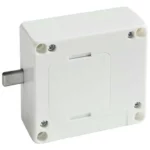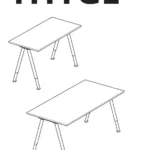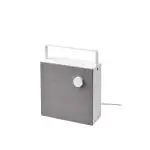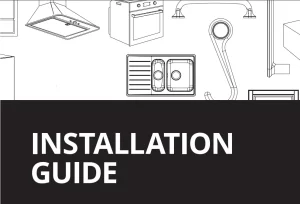
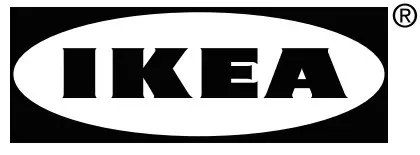
A guide to installing a new IKEA kitchen
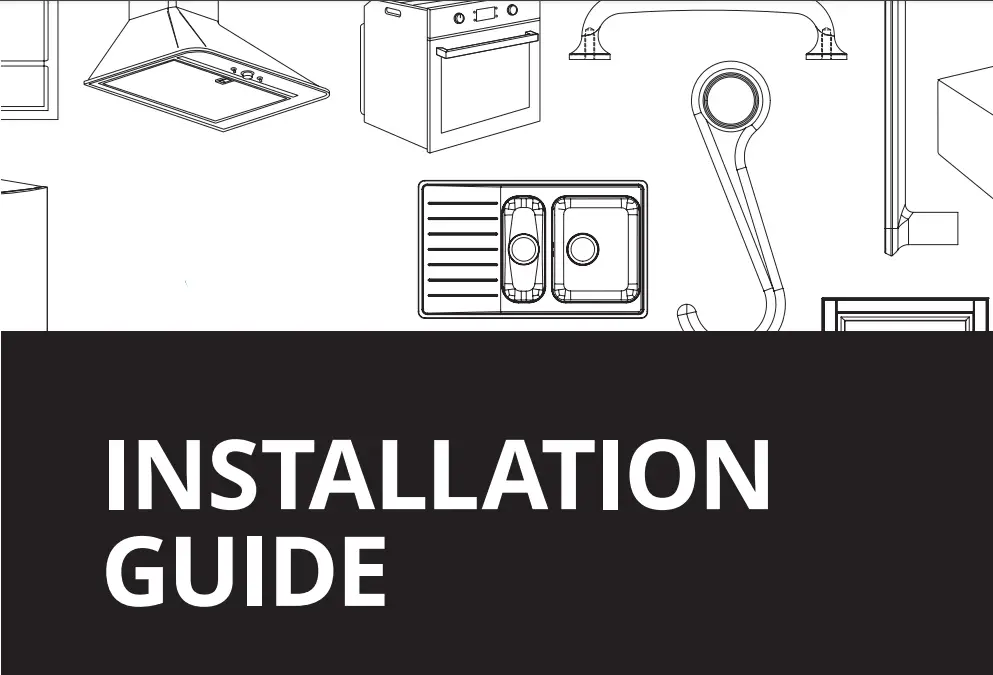
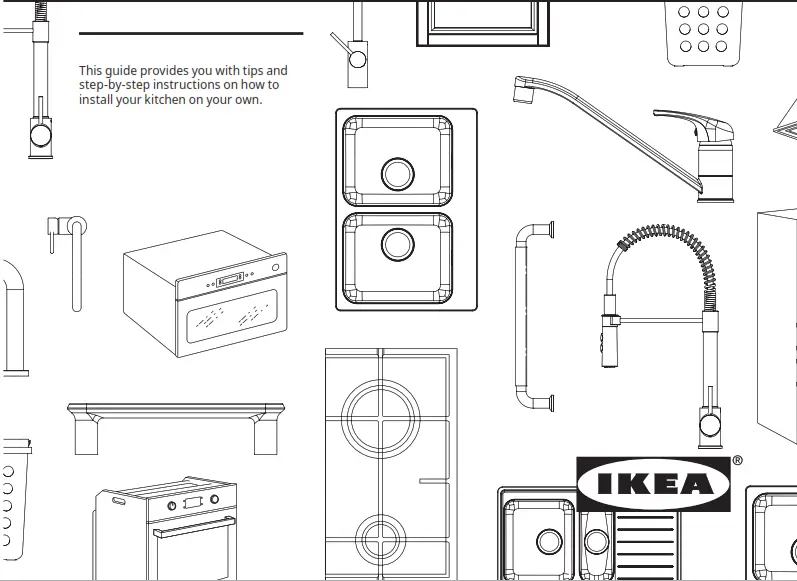
The step-by-step guide
installing your new IKEA kitchen correctly
This brochure is your guide to preparing and installing your new kitchen yourself. Inside you’ll find clear steps o follow as well as useful tips and ideas. Use this guide along with your IKEA assembly instructions to make sure your kitchen is installed in the right way.
Before you begin
Go through this brochure before you begin to see what stages are involved in putting in your new kitchen and o organize what tools you’ll need. To make sure you have everything for your new kitchen, compare the packages and parts you have at home against the order list and the freight list. You should only dismantle your old kitchen when you have all your new parts and appliances. Your kitchen parts and the worktop should be stored indoors, with normal room temperature and humidity. It’s helpful if you arrange your cabinets in the order you will be installing them. Use your packing list and IKEA home planner drawing to help you. Before you remove your old kitchen you need to make sure that your electricity, gas, and water is shut off. Use a qualified professional to disconnect and connect your gas, water, and electricity.
You can do it yourself but you don´t have to
Our kitchens are designed to be as simple as possible for you to assemble and install yourself. But we’re here to help as much as you’d like us to. We can offer you services ranging from planning and delivery to complete kitchen installations. For more details see the back page of this guide, kitchen section of IKEA.my/ kitchen or contact your local IKEA store.

The tools you’ll need
Below is a summary of the basic tools you’ll need. In addition, you’ll find what tools to use for each product in their respective assembly instructions. It’s a good idea to wear safety glasses when using power tools.
| Good to know Plaster, wood or concrete walls? Because there are many different types of walls, fixing hardware is not supplied with your cabinets. Most hardware or home improvement stores stock appropriate fixing hardware and can help you choose the right sort for your walls. |
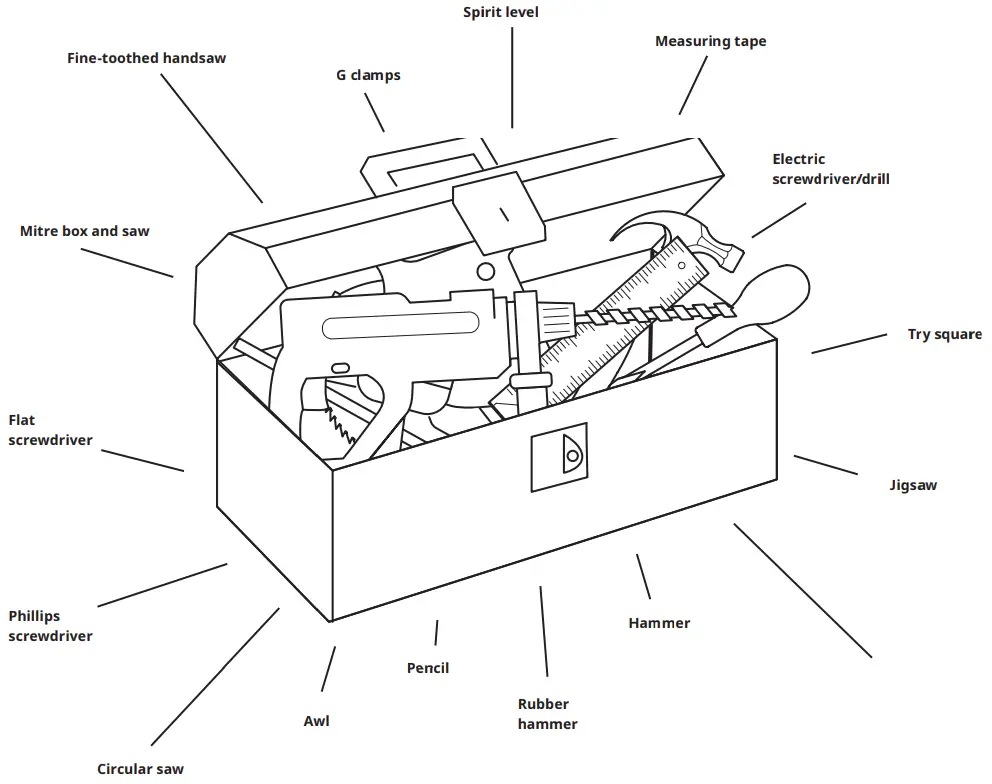
Prepare your room
Once you have removed your old kitchen prepare your room by making sure your walls and floor are even, and your walls are suitable for supporting yournew kitchen. Now is also the time to prime and paint your walls, put in tiles or change your flooring.
Marking cabinet positions
Draw a layout of your new kitchen directly on the wall. Check that everything fits with the measurements from your plan and your electricity, water, gas, and ventilation connections are where you want them. Also, mark where to fasten your new kitchen’s suspension rails.
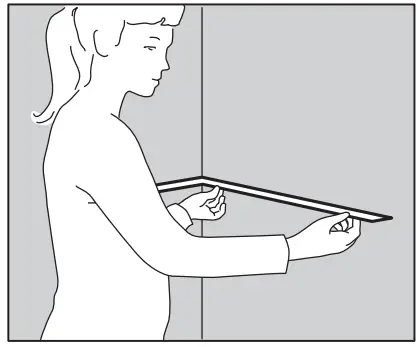 |
Prepare your space by making sure your corners are even and your walls and floor are straight. Use your try square for the corners and a spirit level for the walls and floor. |
 |
Make sure you note the highest point of the floor and where the corners are not 90 degrees. |
 |
Check your wall is strong enough to hang your suspension rail and cabinets. Depending on your wall material, it’s best to install your rail onto a stud or a support beam. An electronic stud finder can be helpful. |
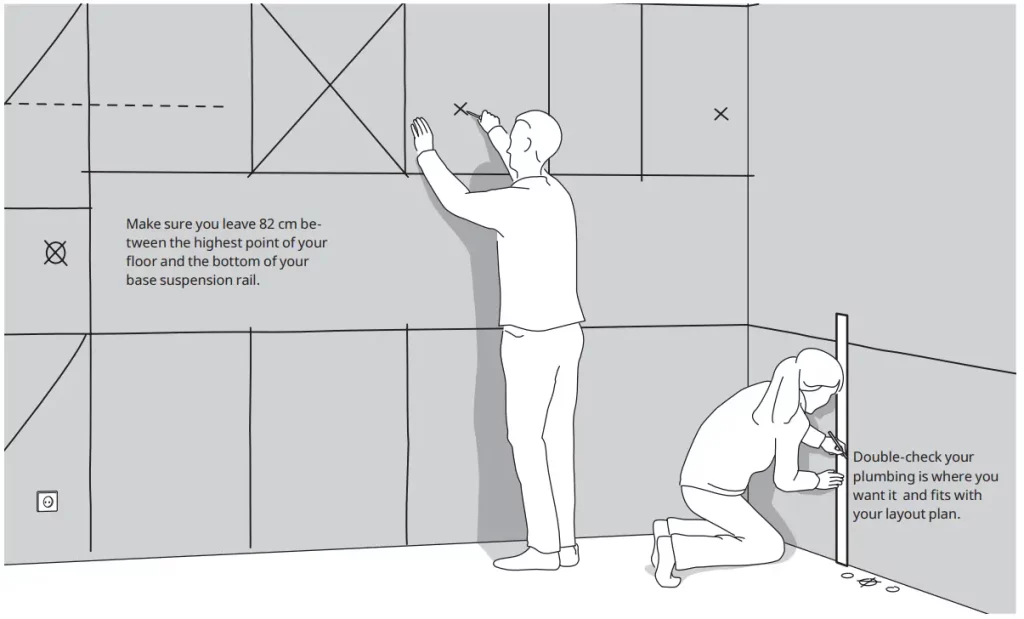 |
|
Mount the suspension rail
Your new IKEA cabinets can be hung directly onto a suspension rail making them easier to install and adjust. It’s important to make sure your suspension rail is straight and level and to secure it with the right screw type for your wall.
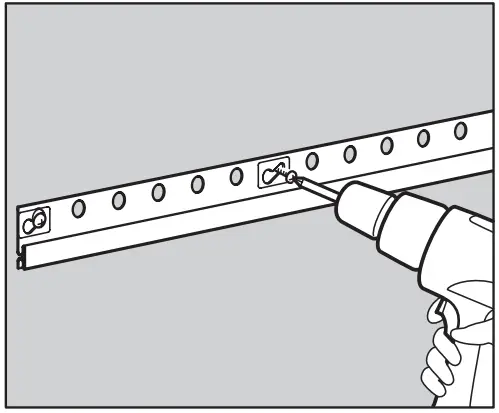 |
Fasten your rails, base rail first. Make sure you’ve found suitable points in the wall where the rails can be fastened and that the rails are level before drilling. |
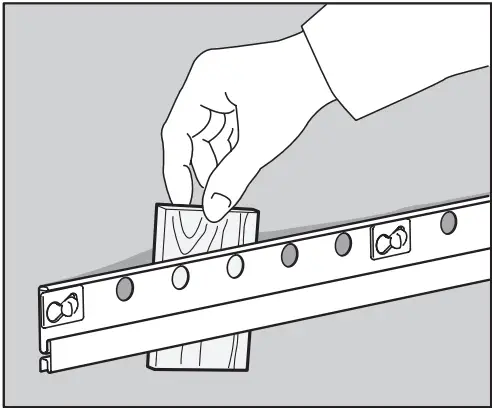 |
If your wall is uneven use distances between the rail and the wall to make sure the rail is straight. |
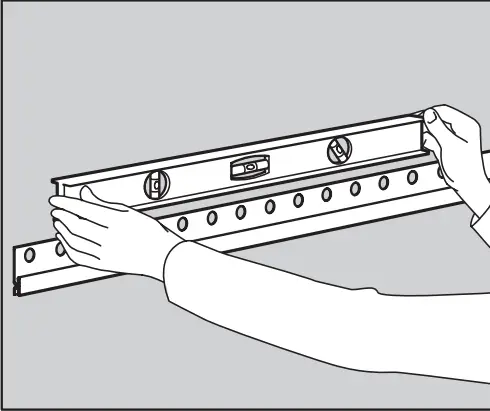 |
Use a spirit level to check that each rail is level. |
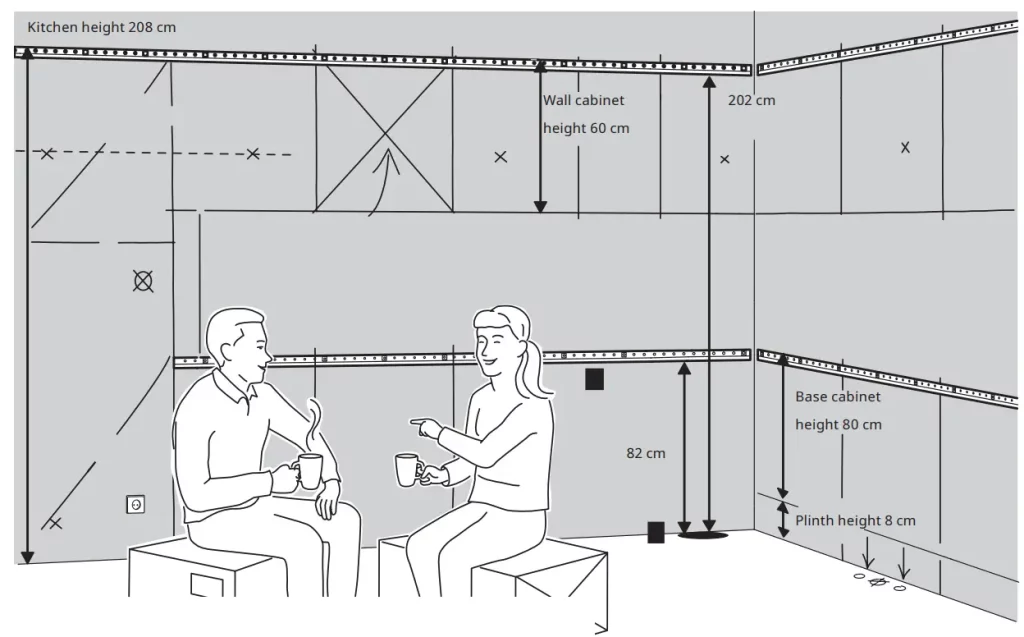
Mount the rails on the right height |
|
Install your cabinets
In most kitchens, it’s best to install your wall cabinets first. This way you have room to move without base cabinets in the way. One exception s if you are installing a single line kitchen with a high cabinet at one end. In this case, install the high cabinet first. Some cabinets have ready-made openings for plumbing and utilities, but you can use a jigsaw to create your own openings if needed. Do this before fitting the cabinet
in place. Be aware where you place openings can affect how you can arrange drawers in a cabinet.
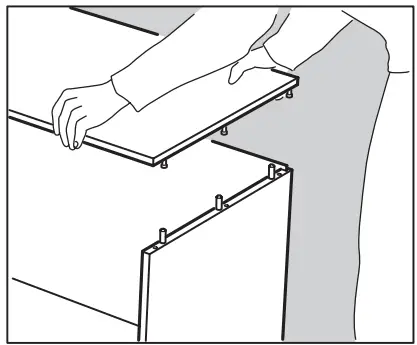 |
Assemble all wall cabinet frames according to the assembly instructions. Wait until later before fitting drawers, doors, and internal fittings. |
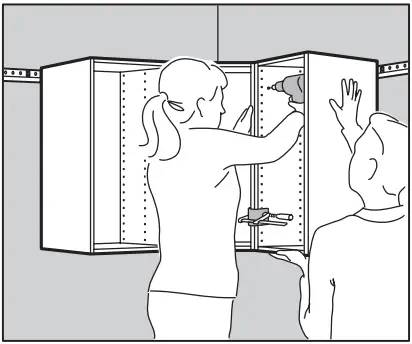 |
Hang the corner cabinet first and secure by tightening the screws. Hang the remaining cabinets and connect them with the included screws. Wait to tighten the screws until the base cabinets are in place and yo u can ensure alignment. |
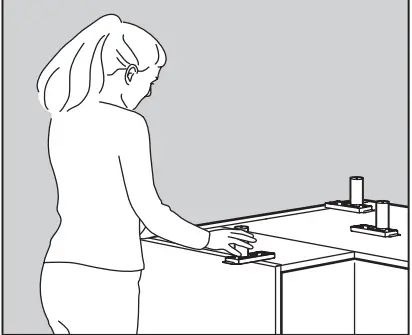 |
Assemble all base cabinets according to the assembly instructions. Make sure to have the legs attached in the order the cabinets will be fitted. |
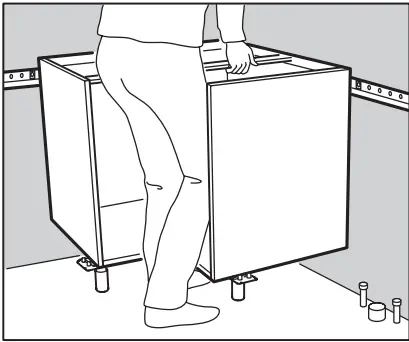 |
Hang your base cabinets starting in the corner. Hang each following cabinet in the same way. If you’re installing a corner carousel now is the time to do it. |
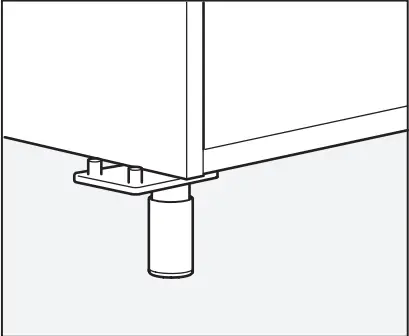 |
Cabinet legs connecting two cabinets can be used to support both cabinets while you’re installing. Remember to use the distance ring included with the legs. |  |
|
 |
Make sure the right base cabinet is aligned with your plumbing. | 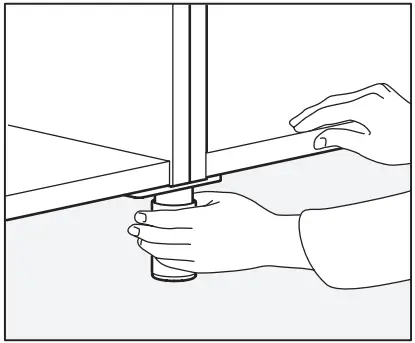 |
Check that each cabinet is aligned with the previous cabinet by adjusting the legs. |
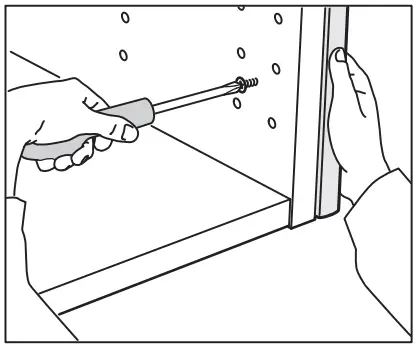 |
If you are using a high cabinet, fit with a cover panel first. | Filler pieces Filler pieces are used between your cabinets and walls for a streamlined appearance, and to ensure there is enough room to fully open doors and drawers. They are especially useful if your walls are not perfectly straight. |
|
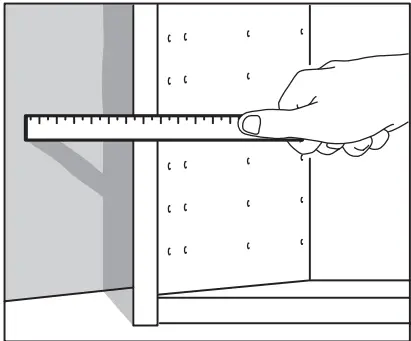 |
Check the wall with your spirit level to see if it is straight. If the wall is even, measure between the wall and the cabinet and mark this distance at the top and bottom of the filler piece. |
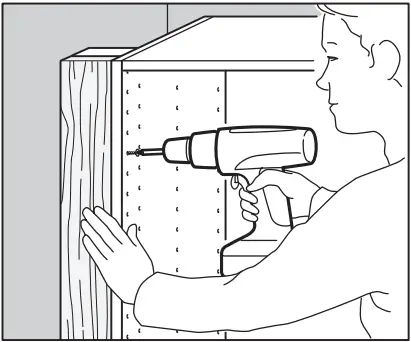 |
To ensure the filler piece stays in place, first fasten a support strip to the wall. Drill holes in the cabinet for the screws you’ll use to fasten the cabinet nd filler piece together. Put the filler piece into place. Put screws through the holes you have drilled. When all your filler pieces are in, caulk around each one with silicone for an airtight seal. |
 |
If the wall is not level and flat, the filler piece must be cut to fit to the wall’s shape. To do this, you’ll need a filler piece, measuring tape, a small block of wood about 1-1 1/3” thick, and a pencil. Cut the filler piece so it’s the same height as the cabinet. Place the edge of the filler piece against the wall. Hold the block of wood flat against the wall with the pencil against it. Keep them pressed against the wall as you slide them down the length of the filler piece. Now you have traced the shape of the wall onto the filler piece. Cut along your trace line. |
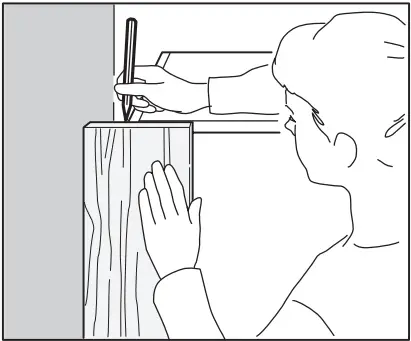 |
Place the newly cut edge of the filler piece against the wall (it should fit perfectly). Mark the edge of the cabinet on the top and bottom of the filler piece. Draw a straight line from these points and cut. |

If you are going to install a high cabinet, don’t make final adjustments or fully tighten the screws until you have installed all the other cabinets as well. |
|||
Install your worktop, sink,
With your cabinet frames in, it’s time to install your worktop, sink, lighting, and appliances. Check that your worktop is the correct size before fitting it in place. Now is also the time if you need to customize your worktop for a sink or hob. Note! Always use your assembly instructions
for help. Once your worktop is in, you’re ready to get your water, gas, lighting, and appliances connected. All water, gas, and electricity connections must be done by qualified professionals according to valid local safety regulations.
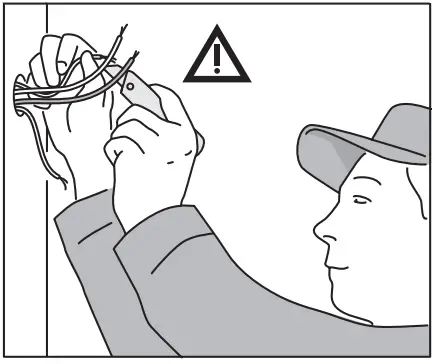 |
All electrical connections must be made by a qualified electrician. | 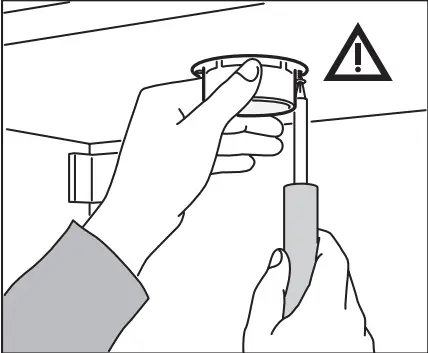 |
Install your lighting and appliances. If drilling holes, use a piece of wood to meet the drill as it penetrates the surface to avoid the edges from splintering. |
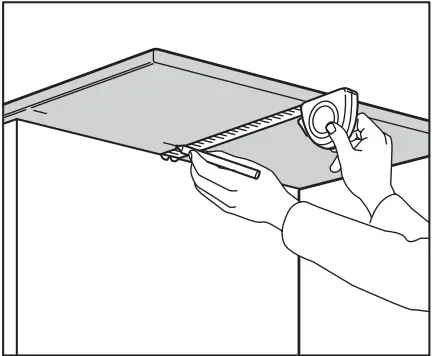 |
Proof measure your worktop. if you have a pre-cut worktop now is the time to cut it to the right length. To avoid splinter, cut with the worktop underside facing up when using a buzz or jigsaw, but with the top if using a handsaw. |
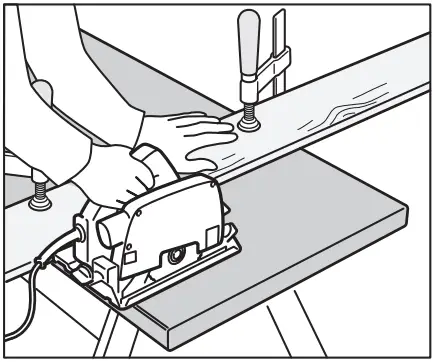 |
Use a circular saw and G clamps to hold a straight edge to your pre-cut worktop when you cut to customize the size. It’s helpful to use a pair of sawhorses to help you. A tip is to have a second person holding the piece to be cut off to avoid the edge from splintering. |
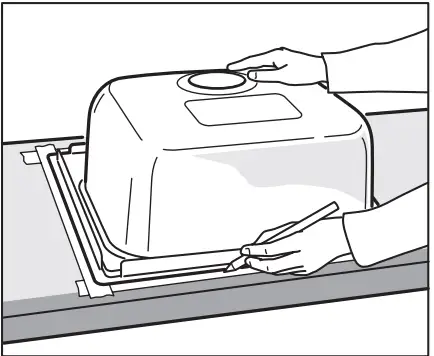 |
Mark a spot for the sink by laying the worktop in place. Trace the inside of the ase cabinet onto the underside of the worktop. This helps you align your sink. Turn your worktop over and trace the outline of your sink onto masking tape. |
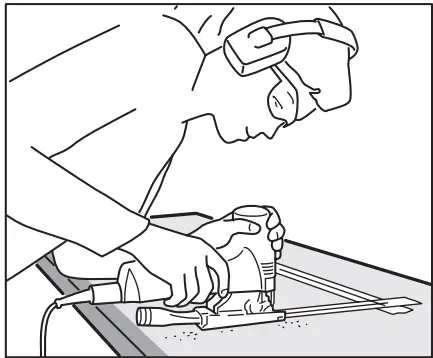 |
Use a jigsaw to cut out space for your sink. It’s helpful to drill a hole on the inside corners of your outline before cutting, so you can make a cleaner cut. |
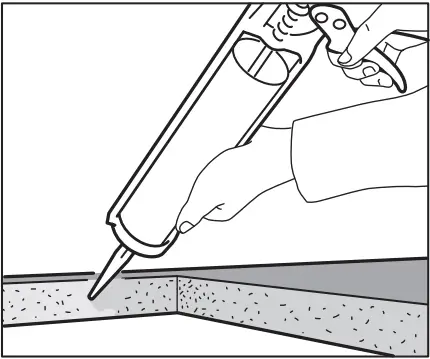 |
To prevent moisture from penetrating the worktop apply polyurethane silicone across the sawn edges. |
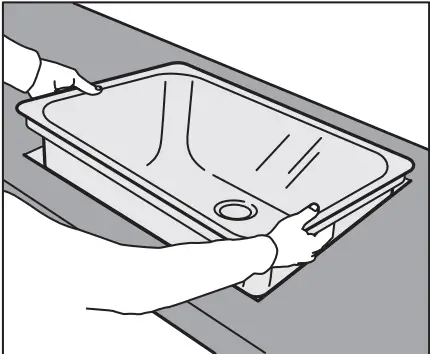 |
Install sink into the worktop according to the assembly instructions. |
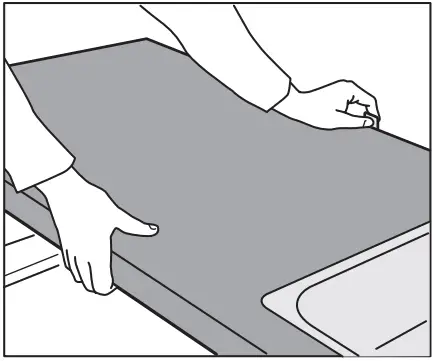 |
Secure your worktop in place according to the assembly instructions. | 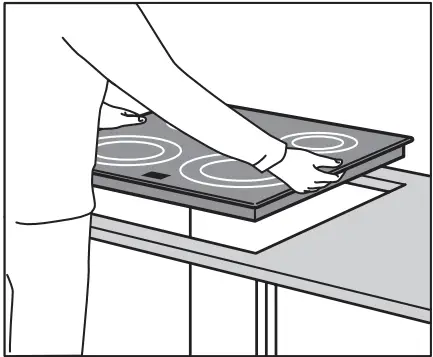 |
Customize your worktop for your hob in the same fashion as for your sink. See your hob’s assembly instructions for help. |
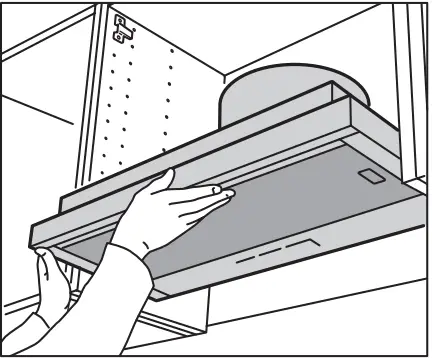 |
Install the extractor hood. The extractor hoods at IKEA can be installed in two ways: either ducted to the outside, called extraction, or used in recirculation mode fittedwith a charcoal filter. Each installation option is described in the assembly instructions that come with the product. |
 |
Saw the hole either in the back panel or in the top of the cabinet. See the assembly instructions. For safety and functionality reasons, follow precise measurements in the instructions for installation that come with the extractor hood/fan. |
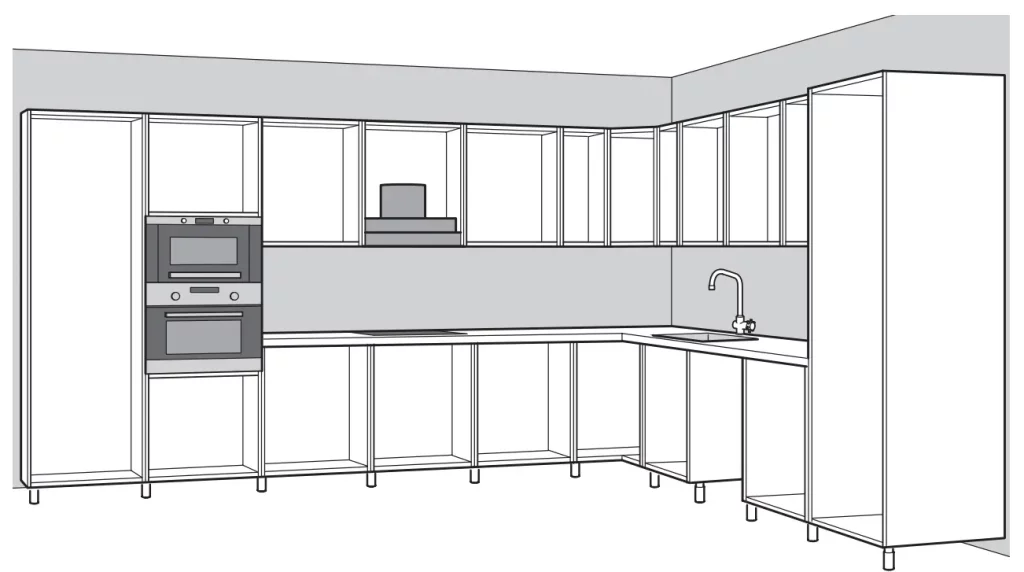 |
|||
Kitchen island
If you’re planning for a kitchen island we have supporting brackets to fasten it firmly to the floor. Legs/plinths must then be fitted around the outside of the island.
You can use either UTBY legs or the METOD assembly kit for the kitchen island. The latter is used to connect cabinets back to back, or for attaching a cover panel to the back of cabinets.
Contact your local IKEA store if you need help regarding the assembly.
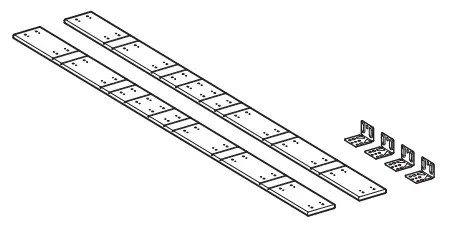
Good to know
If you’re installing a kitchen island, it must be secured to the floor using UTBY legs or by building a plinth frame. Fasten the plinth frame to both the floor and the cabinets. When attaching the frame to the floor be aware of amenities like floor heating or plumbing already installed.
Install your shelves, drawers, doors, knobs and handles.
Now your cabinet frames, worktops and appliances are in, fit your drawer slides into your cabinets. Remember that the slides for inner drawers and standard drawers are fitted in different ways (see your assembly instructions for help).Once the slides are in, fit in your drawers efore your doors and shelves. Finish up by adding knobs and handles as well as any other internal solutions (like wire baskets).
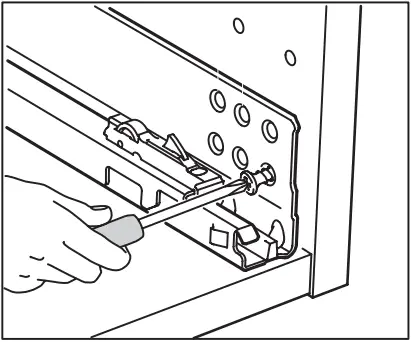 |
Fasten your drawer slides, starting with your outer drawers. Outer drawer slides should be attached to the outer row of holes in your cabinet. | 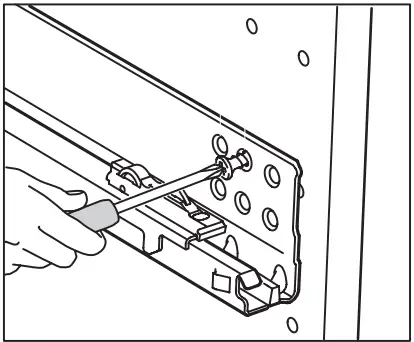 |
Once your outer drawer slides are in, fit your inner drawer slides. The inner drawers slides are fitted to the inner row of holes in your cabinet. |
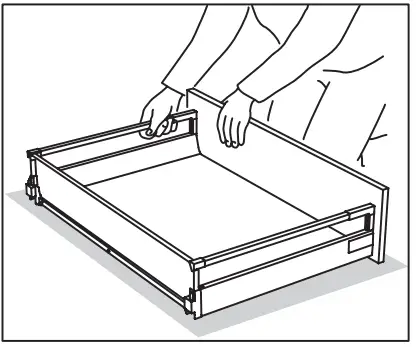 |
Assemble your drawers with the help of the assembly instructions. | 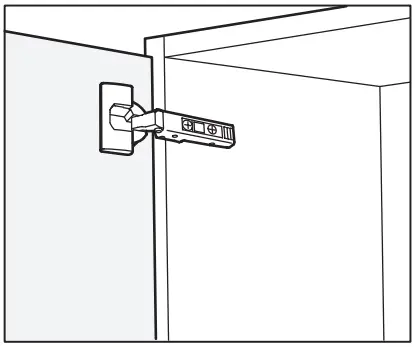 |
Attach the hinges for your doors. |
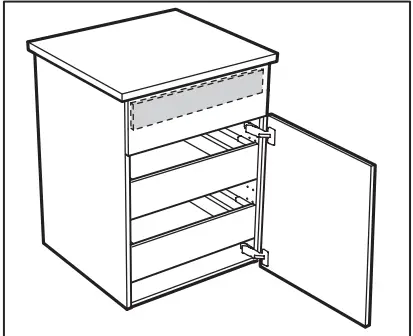 |
Fit your drawers and doors to your cabinets. |  |
Align your doors to the correct height and width by adjusting the screws on the hinge plate. |
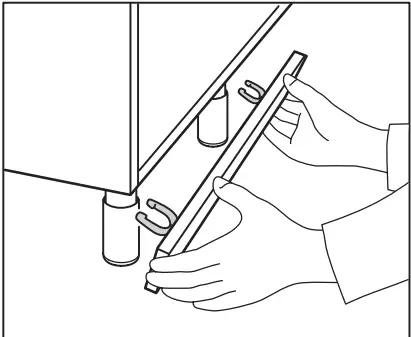 |
If you’re fitting a plinth now is the time to attach it. Follow the assembly instructions for help. | 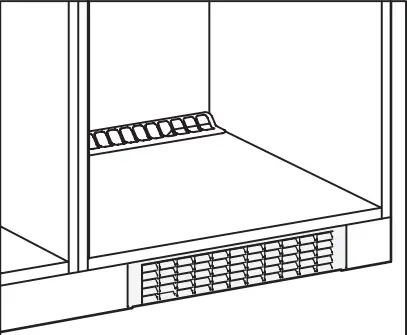 |
If you are fitting a ventilation grill, place the grill between two pieces of the plinth. |
You’re done! Congratulations on your new kitchen!
Caring for your cabinets
Clean the doors, cabinet interiors and wood surfaces with a soft, damp cloth. Only use cleaning products intended for these materials. Do not use products that contain ammonia, alcohol, bleach or abrasives. Rinse with clean water, then dry with a clean, dry cloth. Make sure to clean up spills quickly.
Keep your sink sparkling
After each use, wipe the sink clean with a cloth or sponge damped in water or a non-abrasive detergent, if necessary. Rinse the bowl with water and then wipe the sink with a dry cloth. Avoid scouring powder, steel wool, or hard objects which can scratch the stainless steel surface. The damp surface can be discolored if substances containing iron, such as steel wool, nails or gravel, are allowed to remain on it. Discoloration is caused by foreign material.
Long-lasting worktops
Keep your worktop in top condition by cleaning spills quickly with water and a mild detergent. Be sure to keep them as dry as possible after use.
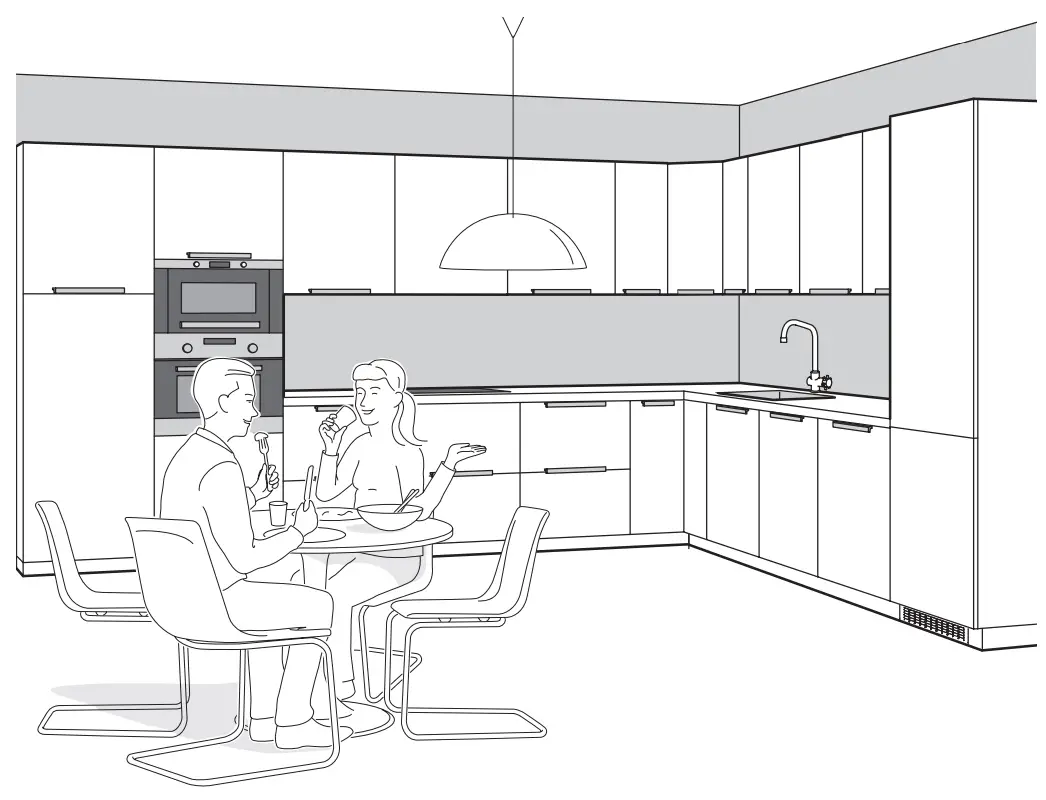
YOU’RE DONE!
Time to step back and admire your new kitchen – and admire yourself for saving so much money by assembling and installing it yourself!
With a little care and maintenance, your new IKEA kitchen will keep looking its best for many years to come.
Services
Our broad service offer gives you the freedom to decide how much you want to do yourself and how much you want us to do for you.
Below you’ll find all the services that we can offer, and how much each of them costs.
MEASURING

Precise measurements and an accurate survey of the conditions of your existing kitchen lead to an accurate kitchen plan and ease of installation. We are happy to offer a measuring service that will send an experienced professional to your home to assess the conditions and
provide accurate measurements
FINANCE LOAN
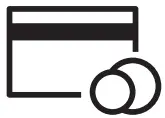
We can help you spread the cost with our 0% Instalment Payment Plan (IPP). Find out more at IKEA. my/IPP
PICKING WITH DELIVERY

Most of our products are flat packed and designed in such a way that they can easily fit in your car. However, if you prefer to have your purchase picked and delivered, you can book a delivery service that can be combined with a picking service. We’ll pick the furniture you want
and arrange delivery to your home or workplace. All you need to do is place the order and look forward to the arrival of your goods.
PLANNING

We don’t want you losing sleep overplanning your dream kitchen. Our kitchen planning specialists will help you.
We specialize in making the best use of space so you get a kitchen that suits the way you live and in the style that suits you. Book a kitchen design appointment at your local IKEA store or IKEA.my/kitchen planner
KITCHEN INSTALLATION
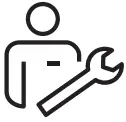
We’ll install your new kitchen for you and coordinate the job from start to finish. Before installation begins we do a final check that the order is right and the measurements correct. Professional kitchen installers will handle all those time-consuming jobs like fitting sinks, taps, and worktops. Your kitchen will be installed to the highest industry standards.
DELIVERY
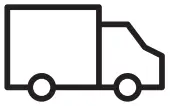
Most of our products are flat packed and designed in such a way that they can easily fit in your car. However, if you prefer to have your purchase delivered, we have a range of delivery options for you to choose from when shopping at IKEA.my or shopping at your nearest
IKEA store.
ASSEMBLY

Our products are specifically designed to be simple to assemble so that our customers can easily do it themselves. That way, you save the most money. However, if you need a hand, we have a range of assembly options for you to choose from when shopping at IKEA.my or shopping at your nearest IKEA store.
